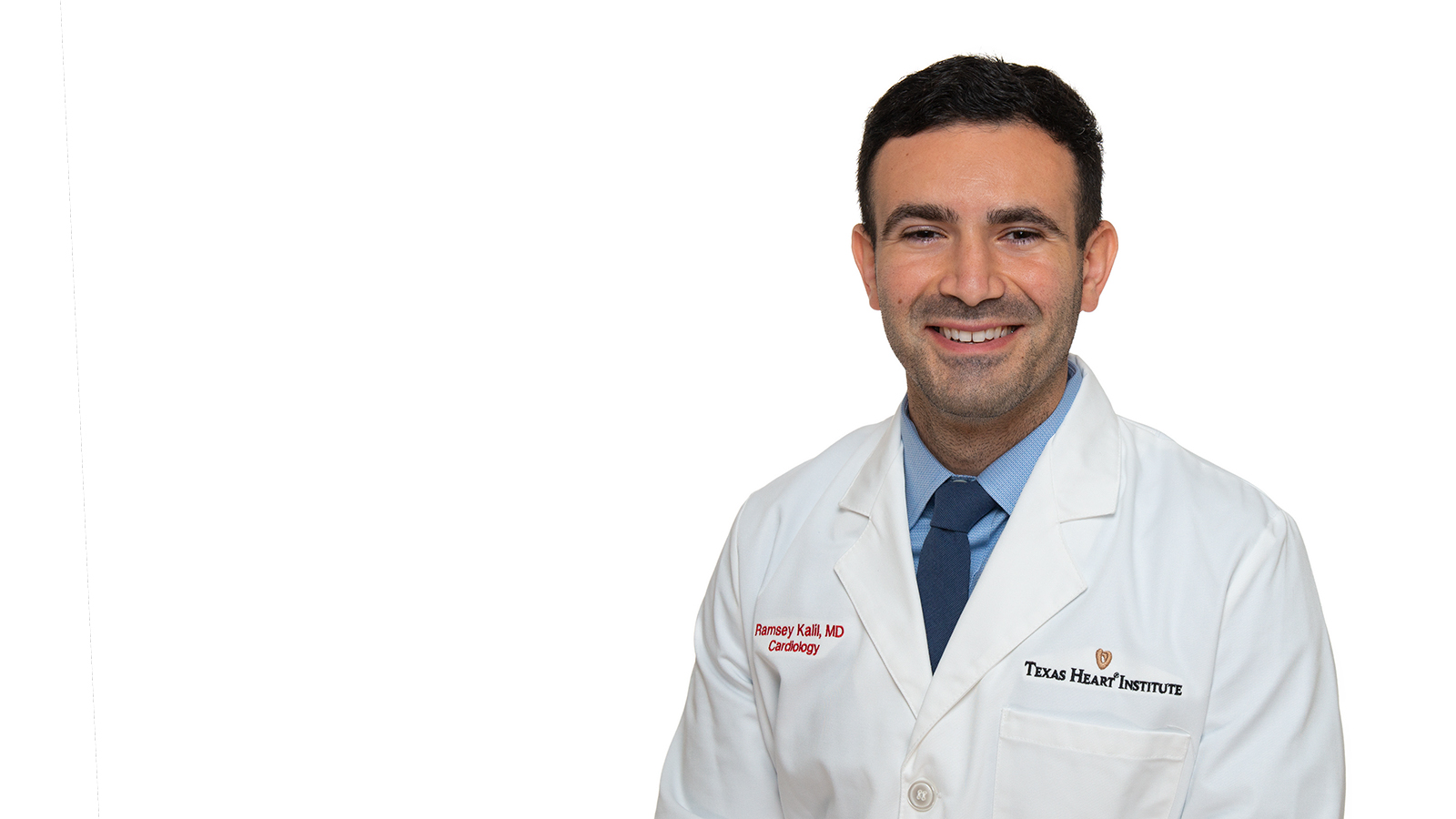Cardiology Fellow Dr. Ramsey Kalil Coauthors New Pacemaker Outcomes Study in PACE

Ramsey Kalil, MD, a first-year cardiology fellow at The Texas Heart Institute, recently coauthored a study revealing an important early predictor of heart failure outcomes in patients undergoing pacemaker implantation. The study, published in Pacing and Clinical Electrophysiology (PACE), showed a link between decreased left ventricular (LV) global longitudinal strain (GLS), which has emerged as a sensitive measure of cardiac dysfunction, and an increased risk of worsened heart failure and death in patients undergoing implantation of a dual-chamber pacemaker. Dr. Kalil conducted the study during his chief residency at New York Presbyterian Hospital – Weill Cornell Medical Center in New York, New York, before joining The Institute in 2022.
The current guidelines from the American College of Cardiology/American Heart Association/Heart Rhythm Society recommend using LV ejection fraction (LVEF) at baseline as the primary parameter for identifying whether patients with heart rhythm abnormalities need treatment with physiologic pacing or a dual-chamber pacemaker to prevent heart failure. Physiologic pacing activates both left and right ventricles simultaneously, whereas a dual-chamber pacemaker stimulates only the right atrium and right ventricle. However, evidence has shown that patients treated with chronic right ventricular (RV) pacing who have a normal LVEF can also be at risk for LV dysfunction and heart failure. Moreover, an early reduction in LV GLS associated with the future development of heart failure has been shown to occur before LVEF begins to decline.
The study by Dr. Kalil and his colleagues of 110 patients with normal LVEF who underwent dual-chamber pacemaker implantation showed a high incidence (39%) of significantly reduced LV GLS over time. In fact, a significant reduction in LV GLS was more commonly seen than a reduction in LVEF after dual-chamber pacemaker implantation. Among patients with reduced LV GLS, a large proportion also had an increased RV pacing burden. Furthermore, reduced LV GLS was significantly associated with the composite endpoint of heart failure hospitalization, upgrade to a biventricular pacemaker, and mortality. Their findings highlight the diagnostic and prognostic value of reduced LV GLS in the follow-up of patients after pacemaker implantation.
As Dr. Kalil explains, “Our study linked LV GLS reduction associated with chronic RV pacing to adverse heart failure outcomes in patients. These results show that a reduction in LV GLS could be used as an additional tool to identify patients with deteriorating cardiac function who are candidates for early intervention. This would be particularly helpful in identifying patients with underlying systolic (ventricular contraction) dysfunction who maintain a normal LVEF, as their heart failure may be misidentified as diastolic (ventricular filling) dysfunction or remain unidentified altogether. Furthermore, LV GLS reduction could be used as an additional risk-stratification tool to identify patients at risk for pacing-induced dysfunction.”
Prospective clinical trials using LV GLS reduction as criteria for the assignment of patients to undergo physiologic versus dual-chamber pacing may help determine whether indications for physiologic pacing or dual-chamber pacemaker upgrade may be expanded. Furthermore, LV GLS reduction could be used as a surrogate outcome measure to determine whether novel pacing techniques are better than conventional pacing techniques for preventing LV dysfunction and heart failure events.
Dr. Kalil’s cardiology fellowship at The Institute will extend through 2025. The 3-year Accreditation Council for Graduate Medical Education (ACGME)–certified general cardiology fellowship at The Institute is open to six fellows per year. After successful completion of the general cardiology fellowship program, fellows are given first preference for subspecialty fellowship positions available at The Institute.
Read Report
Manocha K, Kandola MS, Kalil R, Sciria C, Bassil G, Patel N, Lerman BB, Kim J, Abdelrahman M, Cheung JW. Reduction of left ventricular global longitudinal strain in patients with permanent pacemakers as a predictor of heart failure and mortality outcomes. Pacing Clin Electrophysiol. 2023 May;46(5):385-391. doi: 10.1111/pace.14701. Epub 2023 Apr 22.
News Story By Nicole Stancel, PhD, ELS(D)




